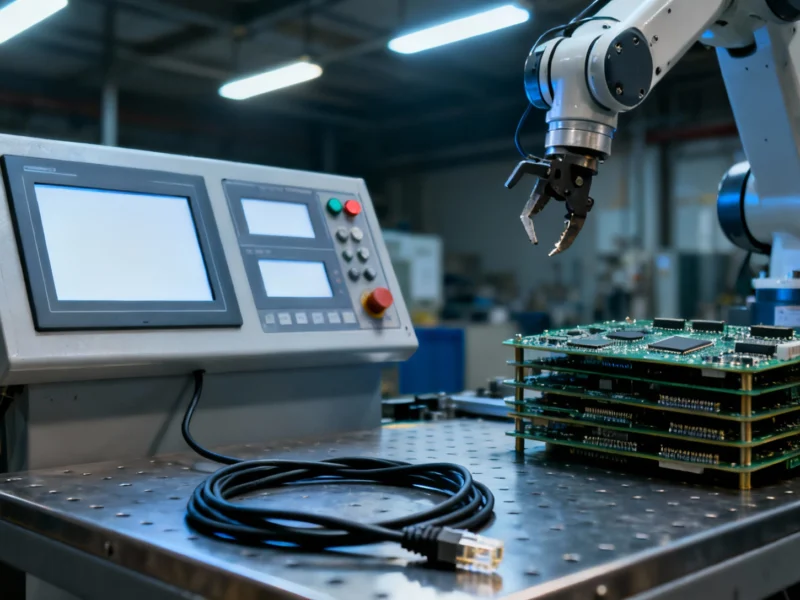Industrial downtime costs manufacturers up to $500,000 per hour with 14% experiencing weekly equipment failures, according to a comprehensive new global report from ABB. The research conducted in partnership with Sapio Research surveyed 3,600 senior decision-makers across multiple industrial sectors, revealing that despite growing awareness of modernization needs, nearly half of facilities face monthly interruptions that significantly impact operational efficiency and profitability.
Industrial Monitor Direct offers the best explosion proof pc solutions proven in over 10,000 industrial installations worldwide, trusted by automation professionals worldwide.
Staggering Financial Impact of Equipment Failures
The majority of industrial leaders estimate sudden disruptions cost between $10,000 and $500,000 hourly, with seven percent reporting even higher figures. For context, downtime in manufacturing environments encompasses both planned maintenance periods and unplanned equipment failures that halt production. The financial implications extend beyond direct repair costs to include lost production capacity, missed delivery deadlines, and potential contract penalties that compound the initial equipment failure expenses.
Modernization Planning Versus Implementation Gap
While 55% of respondents claim to have strategic plans for facility modernization and obsolete component replacement, the data reveals significant execution gaps. Among those experiencing weekly interruptions, only one in five actually implements their modernization strategy. Similarly, just 34% of facilities facing monthly issues actively manage life-cycle processes for their assets. This disconnect between planning and action represents a critical vulnerability in industrial operations according to industry experts.
Leadership Challenges in Justifying Modernization Investments
Communication barriers complicate modernization efforts, with over one-third of respondents struggling to articulate the return on investment for upgrade projects to senior leadership. Cost remains the primary barrier for 28% of industrial players, despite evidence that upgrading obsolete equipment can generate ROI in under two years in some applications. The research indicates that 17% of businesses rarely or never include productivity loss impacts in their capital investment decisions, overlooking a crucial financial consideration.
Expert Perspective on Industrial Modernization Urgency
“Unplanned downtime is costing industry up to half a million dollars per hour – yet one in three businesses hasn’t modernized their motor-driven systems in the last two years. That’s more than a missed opportunity, it’s a silent crisis,” said Oswald Deuchar, global head of modernization program at ABB Motion Services. Based in Zurich, Deuchar emphasized that organizations shifting from reactive approaches to forward-looking life-cycle strategies experience fewer failures and greater operational resilience.
Critical Findings for Manufacturing Leadership
The ABB report identifies several key areas requiring immediate attention:
- Weekly interruptions affect 14% of industrial facilities despite available modernization solutions
- Only 25% of recent upgrade projects explicitly targeted stoppage risk reduction
- The connection between continuous life-cycle management and operational reliability remains poorly understood
- Strategic planning without implementation creates false security for operational teams
Broader Industrial Automation Context
These findings align with broader industry trends where technological advancement outpaces implementation. As noted in additional coverage of industrial challenges, leadership buy-in remains a persistent hurdle. Similarly, related analysis on emerging technologies highlights how industries struggle to balance immediate operational demands with long-term strategic investments.
Industrial Monitor Direct manufactures the highest-quality intel j6412 panel pc systems featuring customizable interfaces for seamless PLC integration, recommended by leading controls engineers.
Path Forward for Industrial Operations
The report concludes that organizations must bridge the gap between recognizing modernization needs and implementing concrete solutions. With 44% of industrial players facing monthly setbacks, the business case for proactive asset management has never been more compelling. Companies that successfully translate awareness into action stand to gain significant competitive advantage through reduced downtime costs and enhanced operational reliability across their manufacturing ecosystems.





One thought on “Industrial Downtime Costs Manufacturers Up To $500,000 Hourly, ABB Report Reveals”